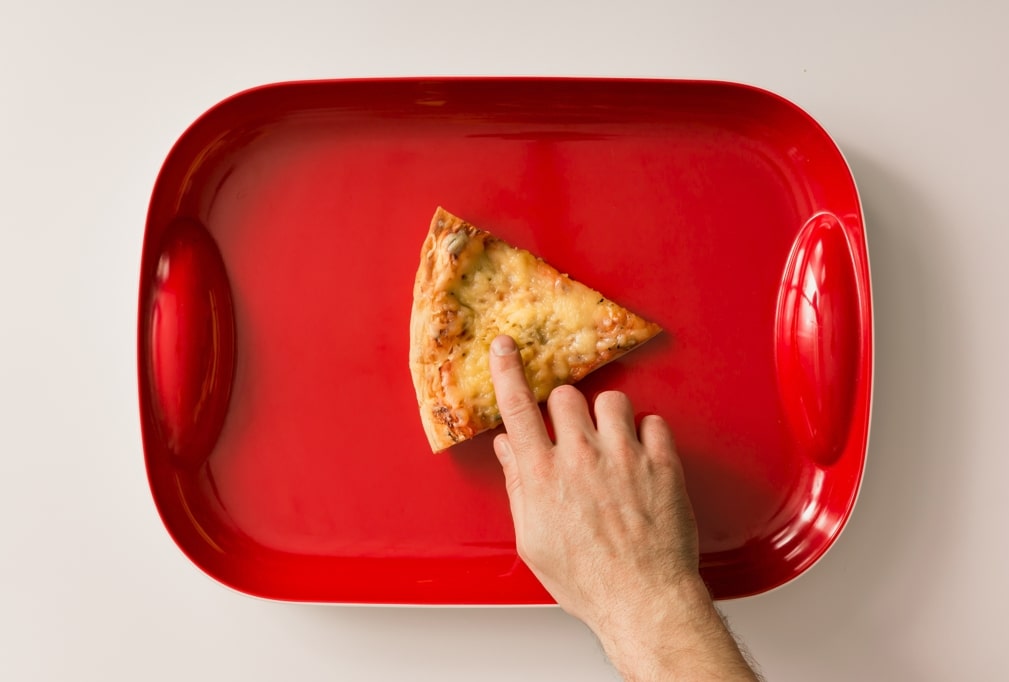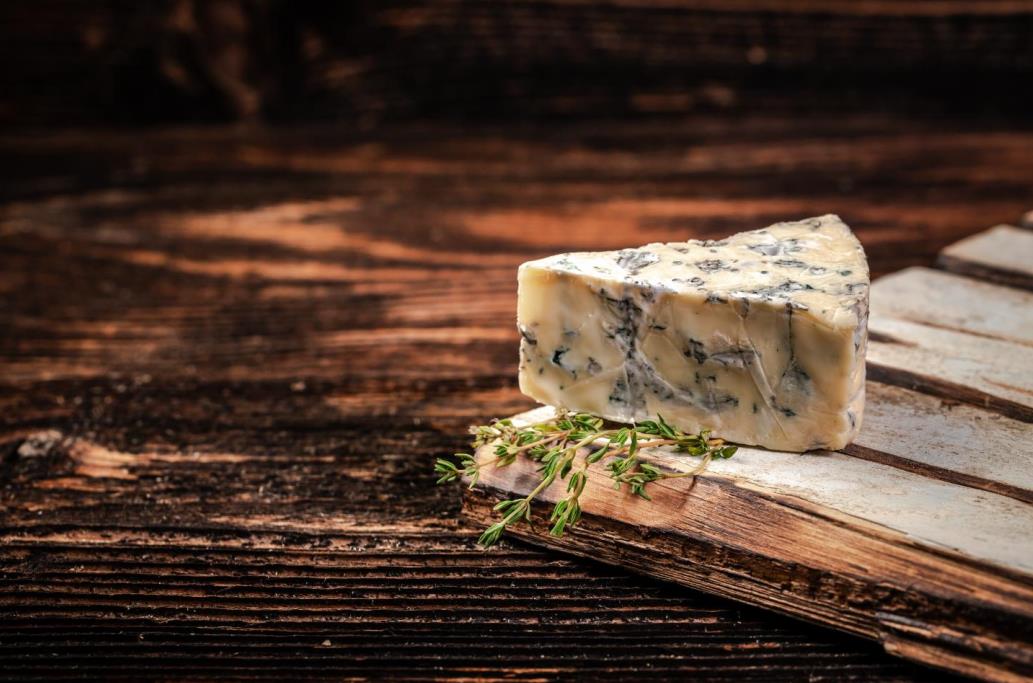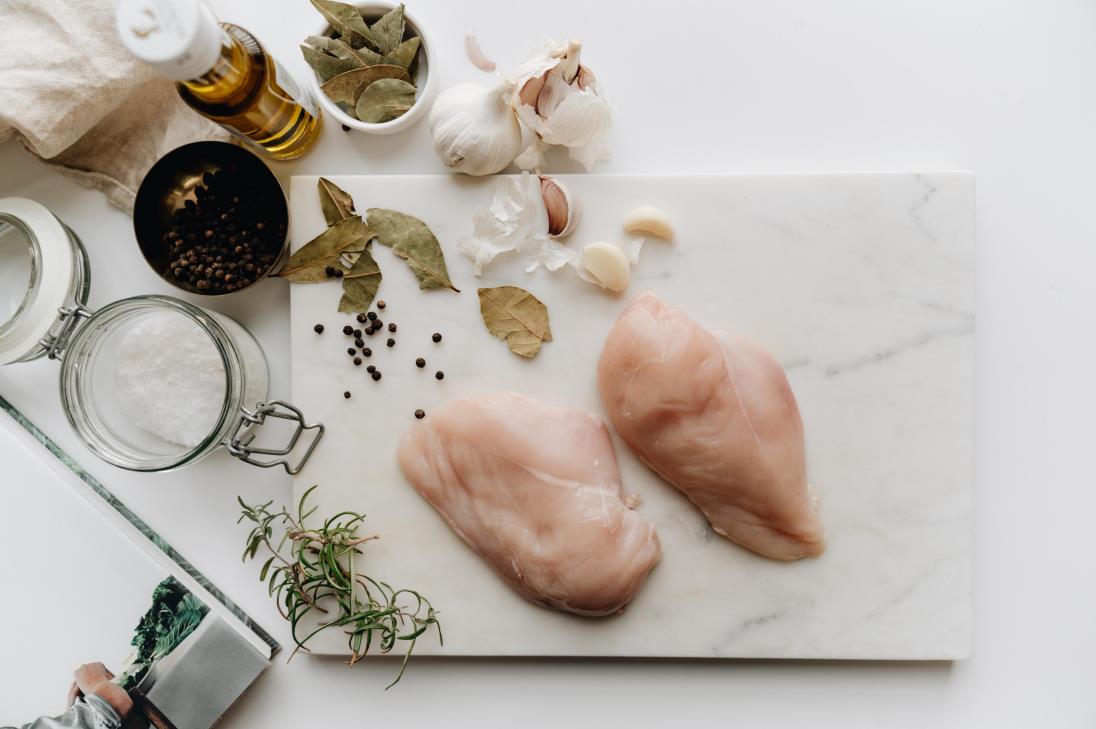Charcuterie boards are the epitome of rustic elegance. When we think of charcuterie, we think of the cured meats, cheeses, and other snacks that adorn the board. However, the board is just as important as the food on it, and finding the right wood is key to creating the perfect charcuterie experience. But with so many types of wood out there, how do you know which is the best for your board?
The best wood for charcuterie board is one that is durable, food safe, easy to clean, and has the looks of refined elegance. Non-porous hardwoods like teak, acacia, and maple make the best charcuterie boards. Other materials like plastic, marble, and bamboo also make good charcuterie boards.
Only a few people have the resources and the luxury to test all the different hardwoods for their charcuterie board. Below we discuss all there is about the best wood for charcuterie boards.
Table of contents
What do you use a charcuterie board for?
“Charcuterie board” generally refers to any board, platter, or tray used to display and serve charcuterie items. Charcuterie boards come in varied shapes, sizes, and designs but typically have a flat surface with raised sides or handles. Whether you’re looking for a charcuterie board for a party or one to take with you on a picnic, there is a style suitable for your needs.
One of the main functions of a charcuterie board is to provide a safe and clean surface on which to place charcuterie items. If you’re serving meat and cheese or other food items that require slicing, it’s important to have a board that is easy to clean and won’t harbor bacteria.
Another important function of a charcuterie board is aesthetics. An attractive board can make your display even more appetizing and inviting. One that has a striking grain pattern and beautiful color that will make your board the centerpiece of any event.
Handpicked for you
True cutting power in the palm of your hand
What to look for in wood for a charcuterie board
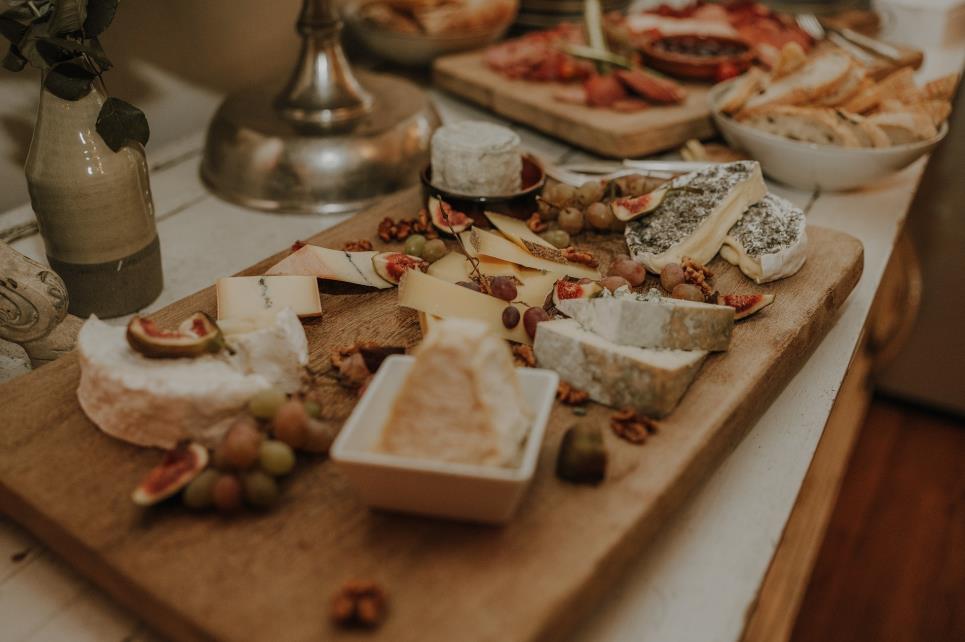
Several factors come into play when choosing the best wood for charcuterie boards. Below are the three most important qualities to look for:
- Durability
- Sanitary
- Aesthetics
Durability
Charcuterie boards see a lot of use. Therefore, it’s crucial to choose a board that can withstand the wear and tear of everyday use. Wood doesn’t just suffer from knife cuts; it also endures water, grease, and other liquids that can damage the surface. Moreover, some charcuterie items can be quite heavy, so you need a board that won’t warp or crack under the weight.
For these reasons, you want to avoid any soft or porous wood. These woods are more susceptible to damage from moisture and knife cuts. Absorbing moisture can cause the wood to warp, while knife cuts can leave behind unsightly gouges.
Hardwoods are the most durable option for charcuterie boards. The tight grain makes them more resistant to moisture and wear. When properly cared for, a hardwood charcuterie board can last for years.
Sanitary
Wood is naturally porous, meaning it can absorb liquids and harbor bacteria. However, some woods are more porous than others. So, when choosing a wood for your charcuterie board, you want to select one that is less likely to absorb liquids and bacteria.
Some, like olive wood, have natural antimicrobial and antibacterial properties. Others, such as maple, have a tight grain that doesn’t allow liquids to penetrate the surface.
You must also choose a type of wood that’s easy to clean. Some woods, such as cherry, can stain easily, so they require more care to keep clean.
However, even with the best wood, cleaning your charcuterie board after each use is crucial. As with any cutting board, you should wash it with warm, soapy water and allow it to air dry. You can also use food-safe mineral oil to keep the wood from drying out and cracking.
Aesthetics
Charcuterie boards are not only functional; they’re also beautiful serving pieces. When choosing a wood for your board, you want to select one that is visually appealing. The grain and color of the wood should complement the food you’ll be serving on it.
For example, if you plan to serve a lot of dark meats, such as bresaola or pate, you might want to choose a board with a dark stain. A light-colored wood might be better if you serve lighter fare, such as fruit and vegetable antipasti.
If you want to add a more rustic touch to your decor, you might want to consider live-edge charcuterie boards. These boards feature the wood’s natural edge or “live” edge, which can add a unique look to your serving piece. Whatever style you choose, make sure the wood compliments your overall aesthetic.
Best wood for charcuterie board

Not all woods are suitable for charcuterie boards. We have beautiful and functional hardwoods, but they may not be the most sanitary option. We also have softer woods that are more porous and can absorb bacteria but feature aesthetic finishes. This section discusses some of the best woods that offer the perfect balance of function and form.
Teak
Teak is a top choice for wood charcuterie boards due to its natural durability and moisture-resistant properties. Teak wood contains high amounts of rubber and oil, which makes it resistant to water damage, warping, and cracking. Teak is also a very dense wood; thus, it can withstand the weight of heavy charcuterie items without damage.
Visually, teak wood has a beautiful brown color tinged with a golden hue. The grain is tight and sharp, with a uniform texture. Given the high oil content, the surface of teak wood can darken over time with exposure to sunlight and heat. However, this change in color does not affect the function of the wood. Instead, it simply adds to the overall beauty of the board.
In addition to its beauty and durability, teak is quite dense in silica. Silica is the material that makes glass and quartzite so resistant to heat and scratches. Thus, teak boards can withstand knife cuts and heavy use, which are common in charcuterie preparation. The most incredible aspect of this wood is that it’s so easy to maintain. A simple wash with soapy water is all needed to keep your board looking new.
Acacia
Acacia is another popular choice for charcuterie boards. It’s a beautiful hardwood with a wide range of colors, from dark brown to golden yellow. Acacia wood grain is usually straight but can be wavy or interlocked, giving off a rustic charm. Some acacia charcuterie boards feature joined-edge construction, which is especially beautiful and unique, whereas others have a more traditional end-grain design.
Acacia wood is also pretty hard and dense. When used as a charcuterie board, it can withstand the weight of heavy meats and cheeses without damage. Moreover, acacia wood is also naturally resistant to water, making it ideal for use in the kitchen. Given the density of the wood, it’s also quite difficult to dent or scratch.
Most people prefer Acacia charcuterie boards because of the low price point. Acacia is quite affordable, unlike some other woods on this list. It’s also easy to find, as it’s a widely used wood in furniture and cabinetry. You can usually find Acacia boards at your local home goods store or online. If quality at a fraction of the price is what you’re looking for, acacia is the best wood for your charcuterie board.
Maple
Mentioning maple might make you think of breakfast, but this beautiful hardwood is also great for charcuterie boards. Most people consider maple wood the industry standard for cutting boards. And for a good reason too. Maple is an incredibly hard and dense wood. It’s difficult to dent or scratch and can withstand heavy use without damage.
The wood is mostly white or pale cream with a fine grain. It has dense pores that give it a smooth texture. Maple wood charcuterie boards also have a minimalist appearance, making them a popular choice for modern homes.
Cleaning a maple board is also pretty easy. While you may want to oil it from time to time, a simple wash with soapy water is usually all needed to keep it looking new. Maple is affordable and easy to find. You can purchase it at most home goods stores or online.
Olive wood
Olive wood is another great option for a charcuterie board. It’s dense and heavy hardwood yet still smooth to the touch. The wood is a deep brown color with black streaks running through it. Unlike other hardwoods, olive wood has a very distinctive grain pattern. The wavy lines give the wood a lot of character and make each board unique.
Olive wood is excellent for charcuterie boards because of its inherent ability to resist bacteria. The wood contains natural oils that make it difficult for bacteria to thrive. The dense grain also makes it difficult for bacteria to penetrate the wood.
Cleaning olive wood boards is similar to maple. Some warm, soapy water and a few scrubs ensure the board is clean. Oiling the boards with food grade mineral oil from time to time will also help keep the wood looking its best.
Olive wood is rare, as such it’s a bit more expensive than other options. It’s also not as widely available.
Other factors to consider when buying a charcuterie board
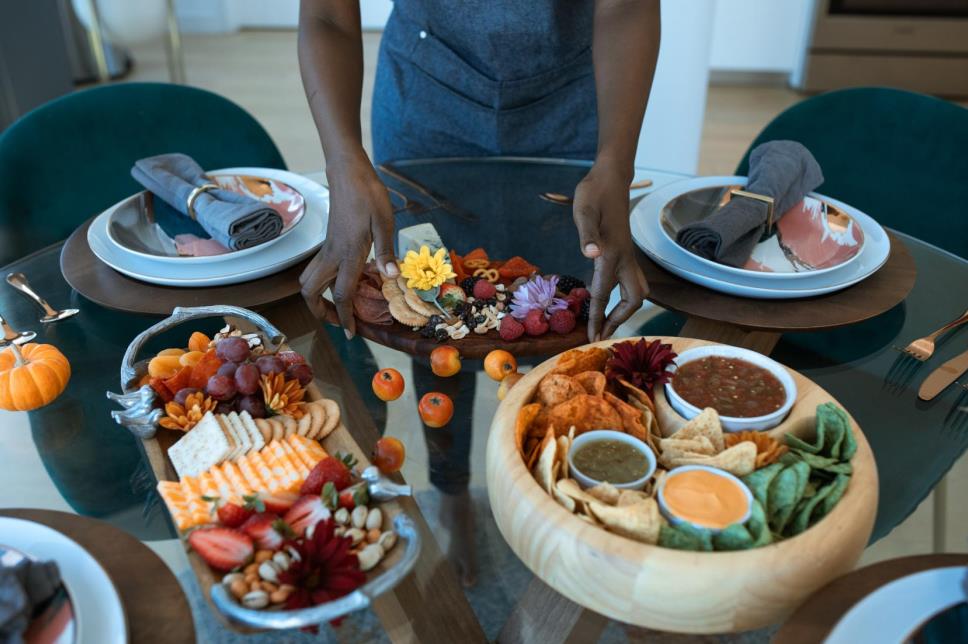
Below are some more factors worth considering when purchasing a charcuterie board.
Size
Size is a crucial aspect when choosing a charcuterie board. You want to ensure the board is large enough to accommodate all the cured meats, cheeses, and other items you plan to serve. But you also don’t want it to be so large that it’s difficult to move or store.
Shape
Charcuterie boards come in a variety of shapes and sizes. The most common shapes are rectangular and round. But you can also find boards in the shape of a heart, triangle, or state. It comes down to personal preference. Consider the shape that best fits your needs and the aesthetic of your home.
Design
Design defines the look and feel of the board. Charcuterie boards can be simple or ornate. They can be made from single or multiple pieces of wood glued together. An excellent board will be both functional and stylish. A rustic board might be perfect for a country home, while a more modern serving board would better suit a contemporary space.
Bottom Line
A high-quality charcuterie board can make entertaining guests a breeze. The above discussion on different woods shows that each type has its unique characteristics. While one might be better suited for your needs, the best wood for a charcuterie board is ultimately the one that you like the look and feel of the most.
Want to learn other exciting kitchen hacks and tips? Whether finding out the best cutting board for knives or how to oil a cutting board, check out our blog for more great content. If you fancy owning handmade kitchen knives, our HDMD store offers an excellent selection of kitchen knives for sale.








